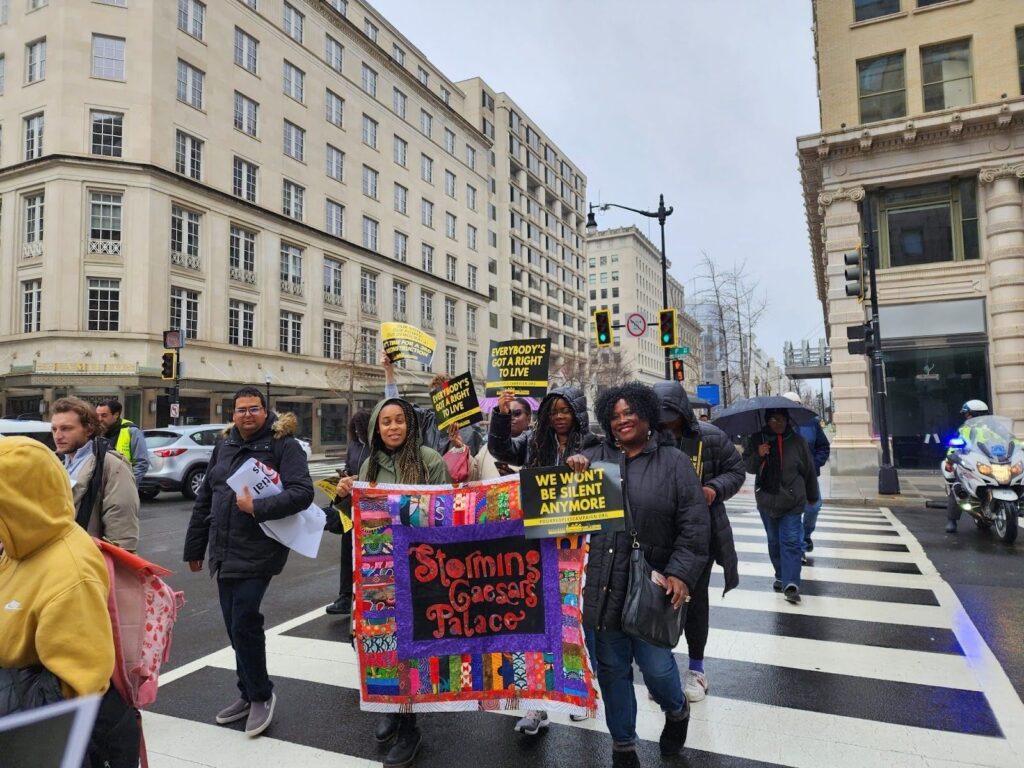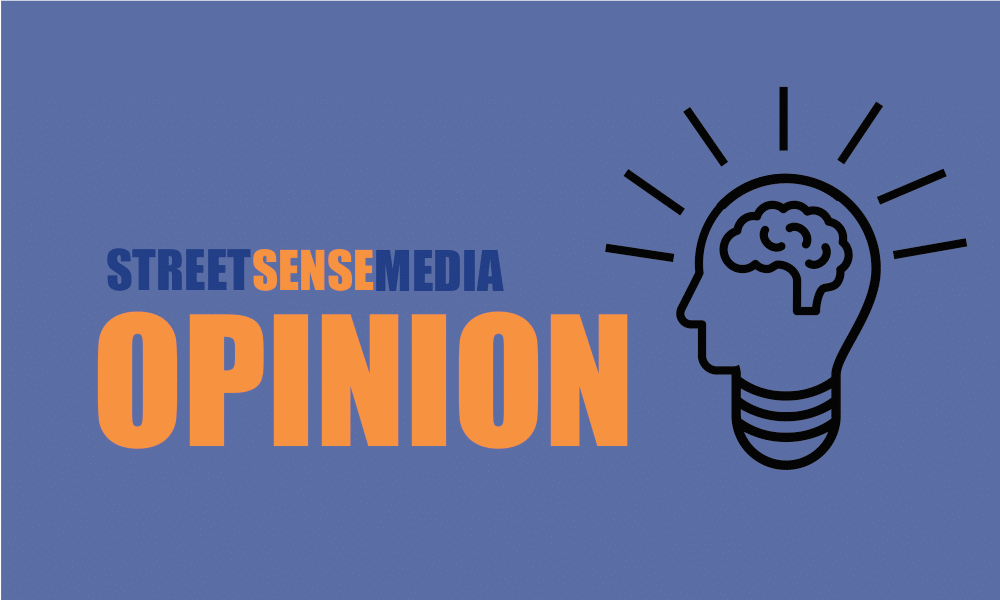While LGBTQ-focused youth programs and housing assistance are growing nationally and in the District, transgender adults are being left behind after aging out of these programs in their mid-twenties.
“The system, the city does not do well,” said Earline Budd, a local advocate of over 35 years and a non-medical case manager at the nonprofit Honoring Individual Power and Strength, or HIPS, which is a District-based organization specializing in harm reduction.
Many housing programs for LGBTQ people across the country are geared towards youth, with an aged-based cutoff at 24. In the District, multi-year long-term housing services by SMYAL and the Wanda Alston Foundation, as well as an 18-month housing program by Casa Ruby, are all for individuals 18-24.
After aging out of that system, there are limited avenues for care besides general long-term shelters, safe houses, and affordable housing. But these options are limited and can be dangerous for trans populations because of continued violence and ongoing discrimination against the group. In 2020, at least 44 trans people were killed in the United States.
[Read more: The Black & Indigenous Transgender Safehaus shows the need for inclusive housing programs]
Budd, who transitioned at 13 and experienced homelessness, addiction, and incarceration herself, came into the field because of her personal experiences with the system.
“We’re trying to figure out, how do we help people beyond 24,” she said. “People are literally … dying on the street because they cannot get housing.”
[Read more: Last year, at least 180 people died in DC while experiencing homelessness]
One in five transgender individuals have experienced homelessness at some point in their lives, according to the National Center for Transgender Equality, and these numbers are increased for transgender individuals of color, especially Black trans women.
In her work at HIPS, Budd has seen the lack of affordable housing first-hand. She inputs clients to various waiting lists for housing, but in most cases, the wait in getting assistance is years, she said.

“You’re praying and hoping that one of your clients gets selected for housing, but in most cases, a lot of times they don’t get to yours,” Budd said. “And unfortunately I’ve had clients, even as recent as like 30 days ago, I’ve had clients that have died before getting housing.”
Long-term shelters not specified to be LGBTQ-affirming are often an unsafe and dangerous route for transgender individuals, said Tamika Spellman, an advocacy director at HIPS.
“As a trans woman, we in D.C., we have the option to have a women’s shelter,” she said. “And a lot of times it’s not a healthy environment because the women do not want us there, so it’s uncomfortable for them. It’s uncomfortable for us.”
But shelters slated for men aren’t an option either, she said, as violence is common against trans women in men’s shelters.
High rates of homelessness are a result of family rejection, housing discrimination, and job discrimination, Spellman said. There has been a systemic problem on a “historical basis” when it comes to equity, she said.
“It’s absolutely ridiculous that we have not advanced at any time or point to where there is greater stability when it comes to transgender women,” Spellman said. “The rest of the LGBTQ umbrella are generally taken care of. They left out the T.”
Why is there little support for transgender adults?
The main reason that LGBTQ housing assistance is youth-oriented is a lack of “compensation or concentration” around the transgender adult population, according to Budd.

Spellman added that there’s a “huge gap” in services for those in their mid-twenties, which she’s experienced personally. Spellman, now 60, said when she was growing up, youth services for ages 18-24 were not in existence.
“By the time they actually came into existence, I was already aged out the system, and it left me out there in the streets trying to figure it out myself,” she said.
Dr. Jennifer Glick, an assistant scientist at the Johns Hopkins Bloomberg School of Public Health and frequent scholar of transgender health and housing, said there’s little programming for older individuals because most research is focused on LGBTQ youth. “Then, their data drives initiatives for young people,” Glick said.
Niko Kowell of the San Francisco Community Health Center said research and resource development focuses on LGBTQ youth because it’s easier to empathize with that age group.
“Which just seems very short-sighted to me,” he said. “Particularly with the trans community, there are so many elements to why there might be barriers to housing.”
Data on trans homelessness, in general, is also lacking, said Joy Moses, the director of the Homelessness Research Institute at the National Alliance to End Homelessness.
Statistics are mostly taken from Point-in-Time counts that take place annually to track the rates of homelessness. Because the count takes place on one night and relies on volunteers, it’s likely that people and areas are missed. Respondents may also conceal their identity as LGBTQ or trans, depending on who’s asking and the nature of the situation, Moses said.
[Read more: As its more comprehensive report on homelessness lags years behind, critics question HUD’s data]
The Department of Housing and Urban Development announced in April that transgender people would be protected from discrimination at federally funded homeless shelters, scrapping a Trump-era rule that would have allowed shelters to turn away transgender individuals. Budd said actions like this are a positive sign.
“I applaud the Biden administration,” Budd said. “I believe that Biden is doing all that you can do right now. I’m trying to give them a little bit of time, he’s only been in office for 100 days.”
Trans homelessness is cyclical, experts say
High rates of trans homelessness is a “cyclical” problem, Glick said, and the issue needs to be approached from multiple angles and levels.
“Trans, nonbinary folks are set up at an early age,” Glick said. “They face family rejection, they face discrimination in schools, which then sets them up to not necessarily have access to high-quality education, access to high-paid employment that comes with health care, etc.”
Homelessness increases the risk of health issues, and these are exacerbated by being unhoused and unsheltered, according to a study by the National Alliance to End Homelessness. Chronic health issues and substance are much more likely to occur among unsheltered populations versus those who are sheltered and homeless.
Trans adults typically have a deeper level of mistrust in the shelter system and medical care systems, especially elders, said Sydney Kopp-Richardson, the director of the National LGBT Elder Housing Initiative at SAGE.
“If you’ve had an entire lifetime of not trusting medical providers because of medical trauma, that catches up with you as you age,” she said.
Job security and hiring discrimination also contributes to high rates of homelessness among trans populations.
A 2015 study by the D.C. Office of Human Rights found 48% of employers appeared to prefer at least one less-qualified applicant perceived as cisgender over a more-qualified applicant perceived as transgender, and 33% of employers offered interviews to one or more less-qualified applicants perceived as cisgender while not offering an interview to at least one of the more-qualified applicants perceived as transgender.

Even with a political science degree from the University of Alabama at Birmingham, Spellman herself struggled to find employment for years.
“It’s sad to say that it took me until I was 50 years old as a Black transgender woman with a college degree, to gain employment,” Spellman said.
[Read more: Transgender job applicants face discrimination in the District]
Trans individuals and LGBTQ youth often turn to sex work at a young age to survive and earn money independently to avoid the structure and requirements of many housing programs, she said.
“A lot of times it starts out with them getting caught up in life and not having a safe place to go,” Spellman said. “A lot of the trans and LGBTQ youth turn to sex work as an easy way to provide for themselves, and to get housing without restriction.”
Interaction with police is heightened when unsheltered, as is the need for emergency room visits.

These statistics are further increased when comparing unsheltered Black transgender individuals and white transgender individuals. For example, 23% of Black respondents cited police contacts while 19% of white respondents cited interaction.
Spellman has worked with No Justice No Pride on this issue in the past few years, which is a trans, sex worker-led abolitionist collective providing housing and resources in the District.
“Criminalization of sex work is criminalization of poverty,” Spellman said.
"Between longer term and temporary housing, NJNP Collective Housing is able to house as many as 75 people a night double the capacity provided by the city for LGBT Housing." https://t.co/FojXNtcTPj pic.twitter.com/2G63mnldEH
— No Justice No Pride (@NJNP_DC) December 2, 2020
Alternative models and government involvement is needed
Advocates have cited a variety of solutions to the ongoing high levels of transgender individuals experiencing homelessness. Some look to government involvement, and others prefer an alternative approach.
Budd said the government needs to be involved in solutions. She is working with the D.C. Council and government agencies like the D.C. Housing Authority to reinvest funds into housing assistance programs for trans adults over 24.

Alternative models like safe houses and mutual aid organizing work, but there needs to be adequate resources to tackle the issue, she said.
Some individuals need structure in combination with housing, as well. Coordinating services to tackle mental health issues and substance abuse is necessary, Budd said, in addition to housing.
“I’m not putting anyone down because of that,” she said. “One has to address those issues before you start to go on and take on a whole apartment and do all the things that one wants to do.”
Other advocates, including Spellman, are fans of grassroots and mutual aid organizing to help trans adults aged out of the system, like the work No Justice No Pride does, instead of increased government involvement.
“A lot of these programs, especially for LGBTQ youth, have a lot of requirements and restrictions that keep a lot of people from not really wanting to engage with it. Everybody doesn’t need structure,” she said.
Glick, with other researchers, published a study in 2020 that outlined solutions to housing instability among transgender populations in the United States. Many respondents raised the importance of transgender-inclusive shelter projects, societal prioritization of housing and raising the minimum wage.
Alternative models like the five safe houses No Justice No Pride operates in the District are effective, Spellman said. Long-term and permanent assistance is offered in addition to short-term and emergency accommodations.
No Justice No Pride follows a “housing-first model,” Spellman said, where there are few requirements needed to receive help.
“Housing creates a stable environment for people to grow and change,” she said. “And even if they don’t, they still deserve housing.”
The organization also offers connections with lawyers, health providers, healing spaces with trauma-informed mentors and name- and gender-change guidance.
“When it comes to housing, we need to be outside of the box,” Spellman said. “And we need to take into consideration people’s circumstances and situations. There are nuances.”








